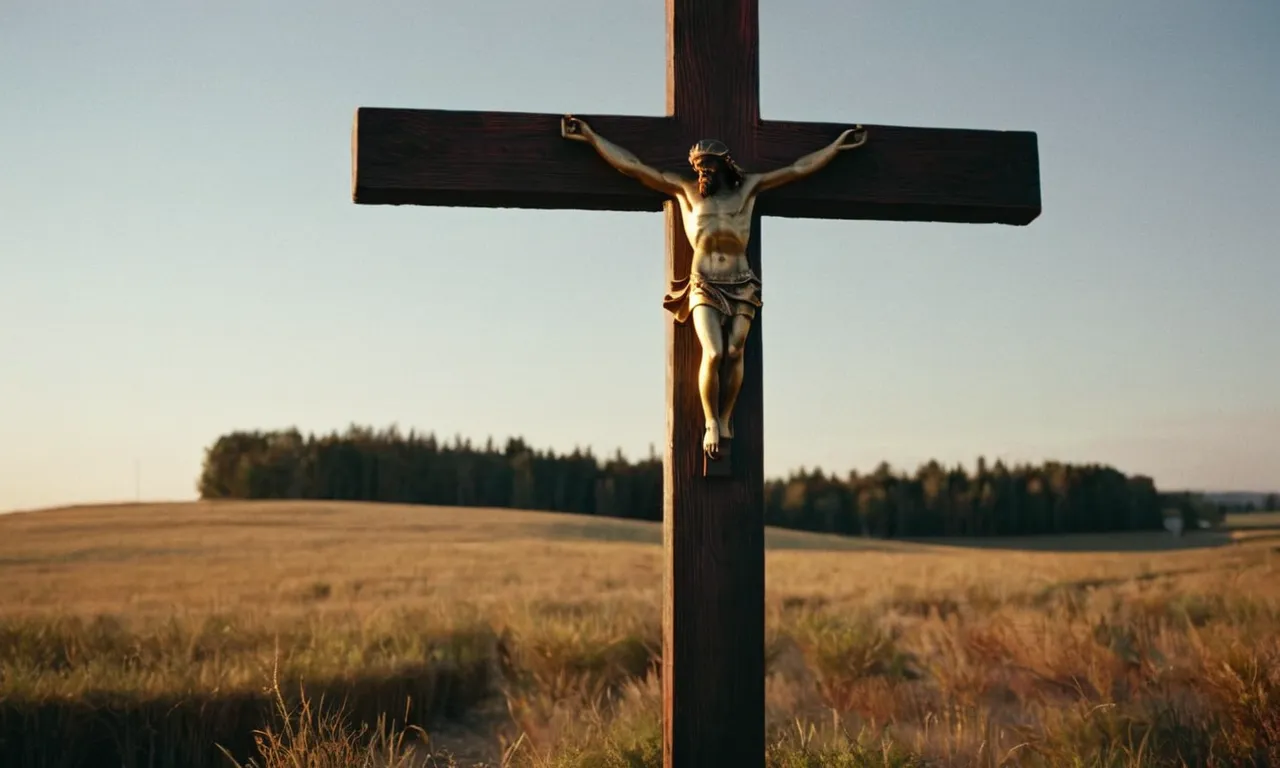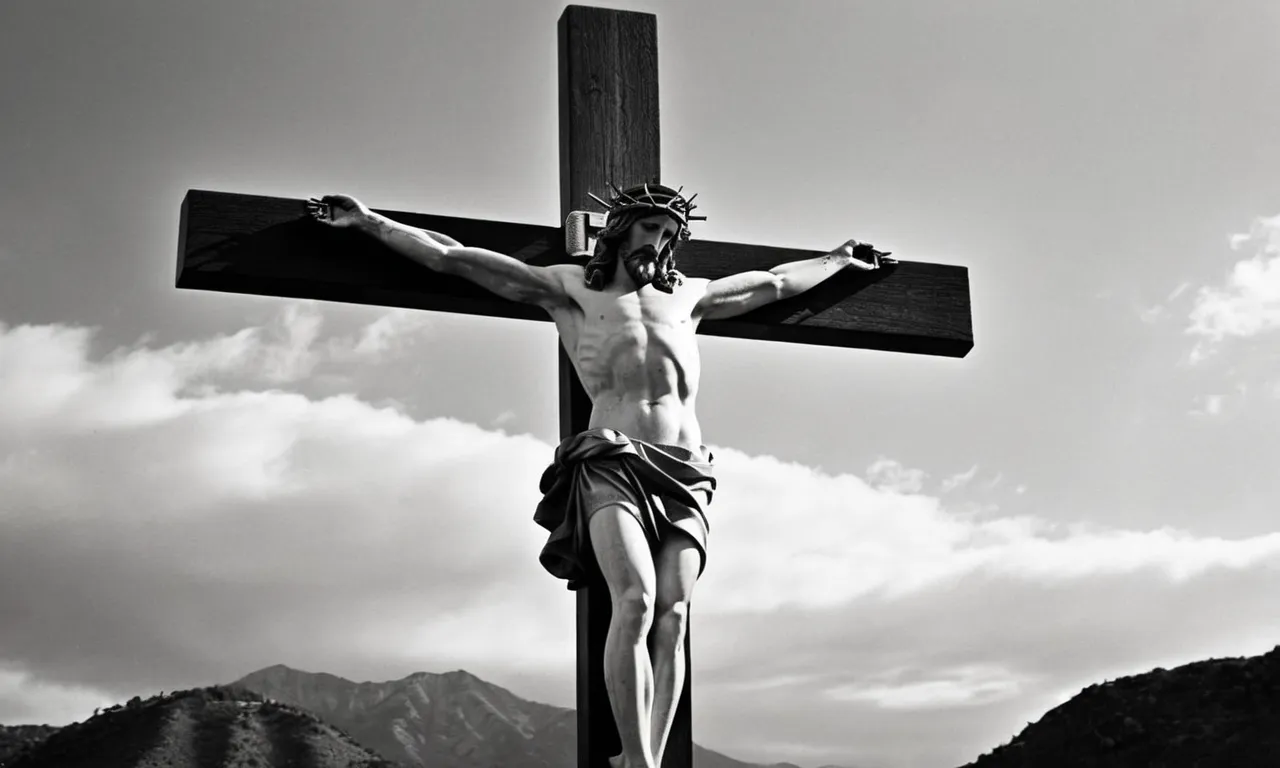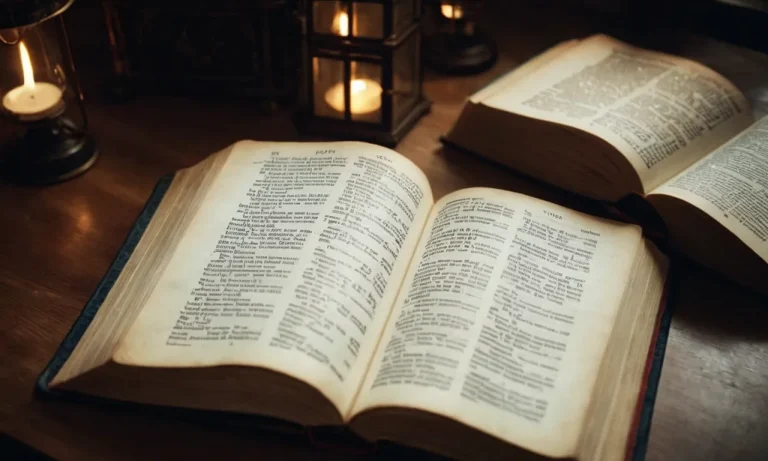Why Was Jesus Crucified Between Two Thieves?
The crucifixion of Jesus Christ between two thieves is one of the most iconic images in Christianity. But why exactly did this happen? Was it just a coincidence or was there a deeper meaning behind this fateful decision?
If you’re short on time, here’s a quick answer: Jesus was crucified between two thieves to fulfill the prophecy in Isaiah 53:12 that stated “he was numbered with the transgressors.”
This was meant to show that Jesus took on the sins of humanity and died like a common criminal even though he was innocent.
In this comprehensive article, we will explore the history behind Jesus’ crucifixion, analyze the biblical prophecies that foretold this event, examine the significance of Jesus dying alongside criminals, and unlock the deeper spiritual meanings behind this poignant scene at Golgotha.
The Historical Context Behind Jesus’ Crucifixion
Jesus’ Trial and Conviction by Pontius Pilate
Jesus was brought before Pontius Pilate, the Roman governor of Judea, to stand trial after being accused of blasphemy by the Jewish Sanhedrin for claiming to be the Son of God.
Although Pilate found no basis for a charge against Jesus, he feared unrest if he did not condemn Jesus.
Eventually, Pilate relented to the demands of the crowd and sentenced Jesus to crucifixion. This fateful decision was likely influenced by Pilate’s tenuous position as governor and his need to appease Jewish authorities.
The Gospel accounts portray Pilate as reluctantly ordering Jesus’ crucifixion even though he believed him to be innocent.
Use of Crucifixion by the Romans
Crucifixion was a brutal form of execution used frequently by the Romans to punish slaves and criminals and terrify the populace into obedience.
As a public spectacle, crucifixions sent the chilling message that resistance to Roman rule would be met with the most painful and humiliating death imaginable.
Although Jewish law did not allow crucifixion, the Romans regularly crucified captives in Palestine to assert their dominance. Jesus was crucified by the Romans because they viewed him as a rebel and threat to Roman authority.
His agonizing death on the cross was meant to destroy the growing movement surrounding him.
The Two Thieves Crucified Alongside Jesus
The Gospel of Luke records that two criminals were crucified on either side of Jesus. This was likely a deliberate move by the Romans to add insult to injury by bracketing Jesus between two “bandits.”
To further humiliate Jesus, one of the thieves joined the crowd in mocking Jesus, while the other had a change of heart and asked Jesus to remember him.
While we have no other historical information about these criminals, their inclusion in the crucifixion scene underscores that Jesus died an excruciating death reserved for society’s worst offenders in the eyes of Rome.
Old Testament Prophecies Predicting Jesus’ Crucifixion
Isaiah’s Prophecy of the Suffering Servant
The Old Testament book of Isaiah contains several passages that clearly predict the suffering and death of Jesus on the cross.
Isaiah 53 is one of the clearest prophecies, describing the “suffering servant” who would be “pierced for our transgressions” and bear the sins of many (Isaiah 53:5).
This passage describes key details of Jesus’ crucifixion hundreds of years before it happened.
Psalm 22 and the Crucifixion
Psalm 22 opens with the haunting words that Jesus cried out from the cross: “My God, my God, why have you forsaken me?” (Psalm 22:1; Matthew 27:46).
The psalm then goes on to describe further details of crucifixion, including the mocking and insults from onlookers, the piercing of hands and feet, the casting of lots for clothing, and extreme thirst.
This psalm was written by David around 1000 BC, yet it reads like an eyewitness account of Jesus’ crucifixion written by someone standing at the foot of the cross.
Jesus as the Lamb Led to Slaughter
The idea of Jesus as a sacrificial “lamb led to the slaughter” also has Old Testament roots. The Passover lamb, whose blood saved the Israelites in Egypt, foreshadowed Christ’s sacrifice for sins (Exodus 12; 1 Corinthians 5:7).
Isaiah 53:7 makes this connection explicitly, saying the suffering servant was “led like a lamb to the slaughter.”
Even Abraham’s near-sacrifice of Isaac on Mount Moriah (Genesis 22) foreshadowed God the Father’s wrenching sacrifice of His beloved Son.

The Spiritual Significance of Jesus Dying with Criminals
Jesus Taking On the Sins of Humanity
When Jesus was crucified between two thieves, it symbolized that he took on the sins of all humanity.
This signifies that Jesus bore the penalty for sin on behalf of all people, so that whoever believes in him could be forgiven and reconciled to God.
By being crucified between two thieves, Jesus indicated that he came to save all people – not just the righteous, but even the wicked, sinful, and outcast.
His sacrifice on the cross was sufficient to pay the penalty for every human’s sin, regardless of how lawless they have been.
Jesus Dying for All People – Good and Bad
The two criminals crucified next to Jesus represent the diversity of humanity. One criminal repented and believed in Jesus, while the other continued rejecting him even while facing death.
But Jesus died for both. As 1 Timothy 1:15 says, “Christ Jesus came into the world to save sinners.”
All have sinned and fall short of God’s glory (Romans 3:23), yet Jesus graciously endured the cross on behalf of all people – saints and sinners alike.
By dying with sinners, Jesus demonstrated that he did not come only to save people who were already righteous and devout. His sacrificial death offers salvation freely even to lawbreakers, wicked people, and religious outsiders.
As Romans 5:8 declares, “God demonstrates his own love for us in this: While we were still sinners, Christ died for us.”
Jesus Bringing Salvation to Outcasts of Society
In Jesus’ day, criminals were despised in Jewish society as outcasts rejected by God. Crucifixion was a shameful way to die.
But Jesus identified with such people in his death, showing that the gospel is good news for whoever believes, no matter how sinful their background.
As the thief who repented shows, even a criminal can receive salvation and forgiveness through trusting in Christ.
By bearing the sins of the world between two criminals, Jesus indicated he did not come to condemn the lost but to save them (John 3:17). Though rejected by religious elites of his day, Jesus offered the hope of redemption to all who acknowledged their sin and turned to him.
His death opened the way for outcasts and sinners to be reconciled and brought into God’s kingdom.
Deeper Meanings Behind Jesus’ Crucifixion Scene
Jesus as the Innocent, Sacrificial Lamb
Jesus is often referred to as the “Lamb of God” who takes away the sins of the world (John 1:29). This metaphor has roots in the Old Testament sacrificial system where unblemished lambs were slain to atone for people’s sins.
Just as these innocent lambs were killed for others, Jesus was the ultimate innocent sacrifice who bore the punishment for humanity’s transgressions (Isaiah 53:5-6).
Though Jesus was perfect and blameless, he was put to death between two criminals, vividly portraying how he took on the sin and shame of the world.
Jesus Embracing His Lowly State
Though Jesus was God incarnate, he willingly embraced a humble, lowly existence during his earthly life (Philippians 2:6-8).
This humility and servitude culminated at the cross. By being crucified between thieves at one of the most disgraceful places, Jesus identified with the lowest members of society.
His suffering and death pictured how far he went to empathize with and redeem sinful humanity. The scene displayed his radical servanthood in stark terms.
Jesus Being ‘Numbered with the Transgressors’
The prophet Isaiah predicted of the Messiah, “he was numbered with the transgressors” (Isaiah 53:12). Jesus literally fulfilled this prophetic type by being crucified between two thieves.
This shocking visual reinforced how Jesus took the guilt, punishment, and shame due to sinners upon himself.
By bearing the penalty of sin to the fullest extent, Jesus opened the door for all people to be freed from slavery to sin and to experience new life in relationship with God.
Conclusion
In the end, Jesus’ crucifixion between two thieves carries immense theological weight and significance. This striking scene fulfills several Old Testament prophecies about the Messiah’s sacrificial death to bring salvation to all who believe in Him.
Rather than allowing this image to lose its meaning through overfamiliarity, may we reflect anew upon the incredible love and grace showcased at Calvary.
As Jesus gave his life squeezed between two sinners, he demonstrated his willingness to identify with the lowest dregs of humanity in order to redeem us from our fallen state.








